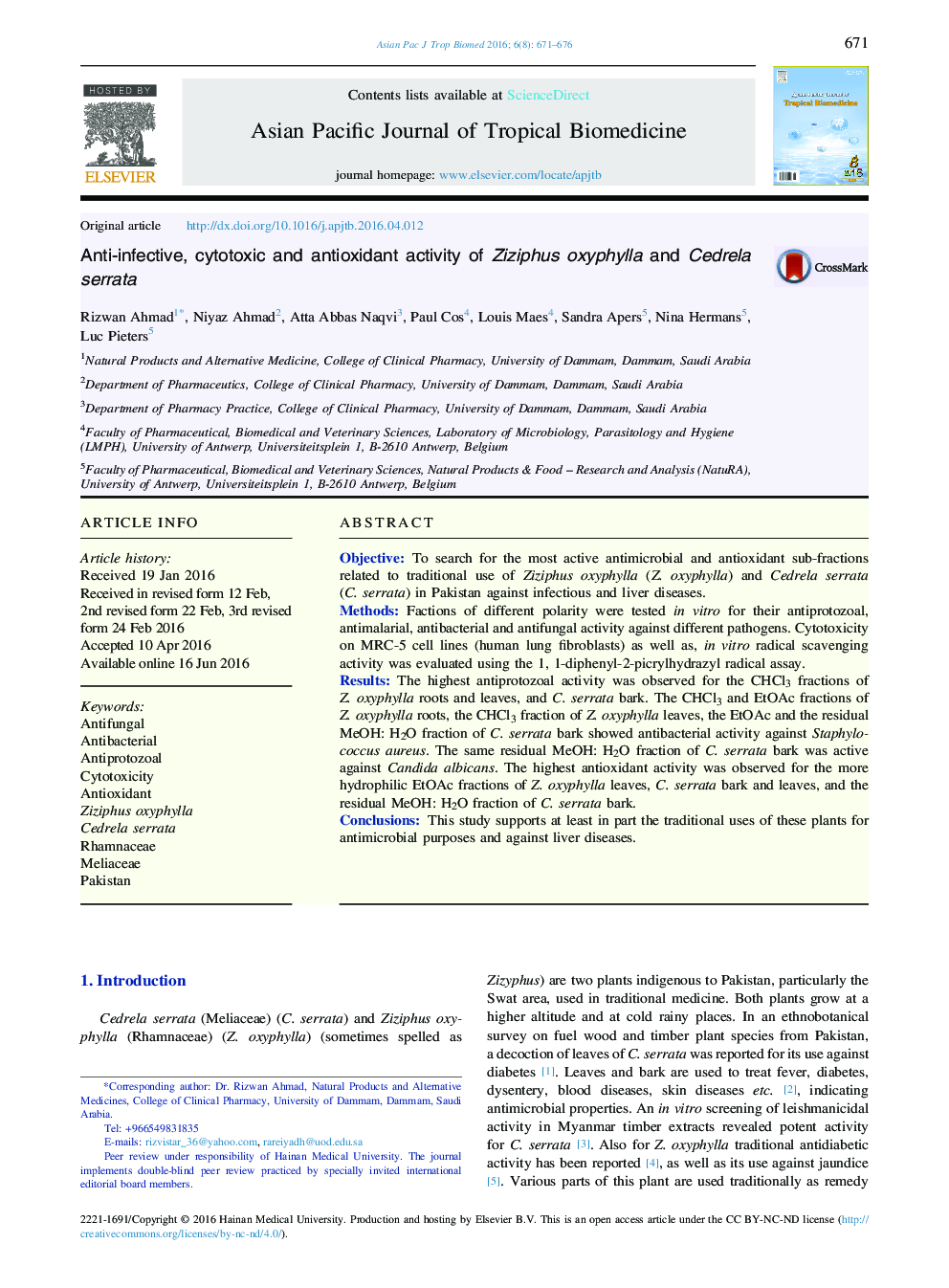| Article ID | Journal | Published Year | Pages | File Type |
|---|---|---|---|---|
| 2032369 | Asian Pacific Journal of Tropical Biomedicine | 2016 | 6 Pages |
ObjectiveTo search for the most active antimicrobial and antioxidant sub-fractions related to traditional use of Ziziphus oxyphylla (Z. oxyphylla) and Cedrela serrata (C. serrata) in Pakistan against infectious and liver diseases.MethodsFactions of different polarity were tested in vitro for their antiprotozoal, antimalarial, antibacterial and antifungal activity against different pathogens. Cytotoxicity on MRC-5 cell lines (human lung fibroblasts) as well as, in vitro radical scavenging activity was evaluated using the 1, 1-diphenyl-2-picrylhydrazyl radical assay.ResultsThe highest antiprotozoal activity was observed for the CHCl3 fractions of Z. oxyphylla roots and leaves, and C. serrata bark. The CHCl3 and EtOAc fractions of Z. oxyphylla roots, the CHCl3 fraction of Z. oxyphylla leaves, the EtOAc and the residual MeOH: H2O fraction of C. serrata bark showed antibacterial activity against Staphylococcus aureus. The same residual MeOH: H2O fraction of C. serrata bark was active against Candida albicans. The highest antioxidant activity was observed for the more hydrophilic EtOAc fractions of Z. oxyphylla leaves, C. serrata bark and leaves, and the residual MeOH: H2O fraction of C. serrata bark.ConclusionsThis study supports at least in part the traditional uses of these plants for antimicrobial purposes and against liver diseases.
